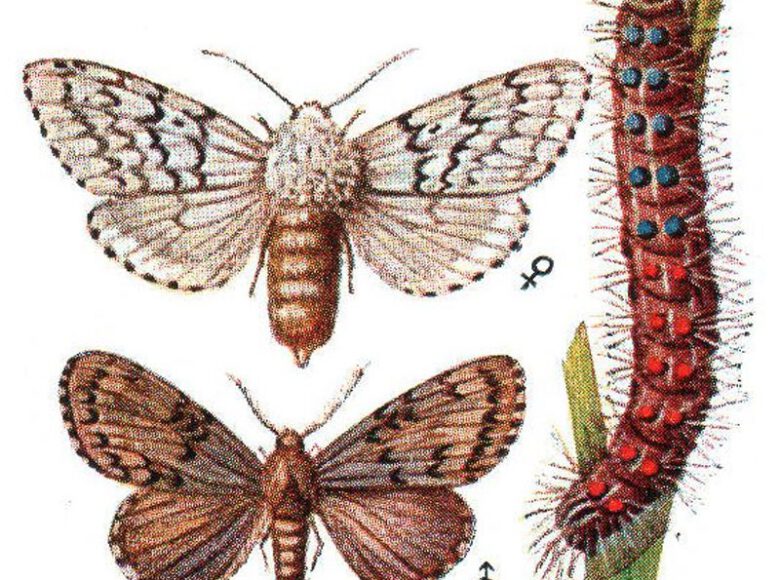Lymantria dispar has dealt with quite the controversy over its common name in recent years. Even though many of us struggle to agree what to call it, we can all agree on one thing; this moth isn’t welcome in our trees! Any of us who have had the displeasure of watching this moth’s caterpillars eat through the trees is pretty much in agreement. GET IT OUT! We at Safe Tree have some very effective control methods. But before we get into that we thought we would ask, why exactly is it here?!
It seems Lymantria dispar is native to parts of Europe, Asia, and Africa. Their arrival to North America can be entirely and clearly traced back to the year 1860. A French scientist named Trouvelot was looking to cross breed the Gypsy moth with a Silk moth. He believed, since Silk moths are so finicky in what they eat and how they live, that crossing them with the Lymantria dispar would produce a more robust silk moth. This experiment was no success since silk moths and Lymantria Dispar are incapable of breeding together. In 1869, a few Lymantria dispar escaped the lab in Bedford, massachusets and ran rampant amongst the trees. Trovelot was worried and alerted the authorities, but all accounts indicate that no one else was worried at the time.
By 1980, that changed. Gypsy moth was by now known to common folk and regarded as a pest. People took notice! The Massachusetts government made it their mission to eradicate the pest and set out an enormous campaign to control it. The methods of control at the time included the manual removal of egg masses and an arsenic-based spray insecticide (yeesh!). The program was quite successful and by the year 1900 LDD moth was seldom seen. The government thought it was safe to stop eradicating.
They were wrong and by the 1920’s the moth was back! It began spreading throughout nearby states and different methods of control were being experimented. More resistant trees were beginning to be favoured as well. New insecticides were being tested and in the 1940’s Dichloro-diphenyl-trichloroethane (DDT) was developed. It proved to be effective and was beginning to be widely used for LDD Moth control purposes. That is, until the public began to complain of its harmful effects on the environment. DDT was then scaled back, and finally, banned in the 10970’s.
The rest we can see currently unfolding in our backyards year by year. We see the Gypsy moth spread gradually North bit by bit. Fortunately, we do have some tools to help us slow this progression through specialised targeted insecticides and pheromone traps. It is simply one of the bests we deal with on a regular basis. It is important that we continue to battle this pest if we want to preserve our native tree species. We are hopeful that one day Lymantria dispar will be less present and less of a threat to our beloved trees.

